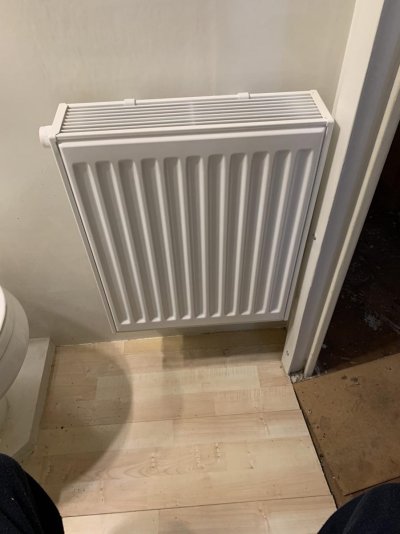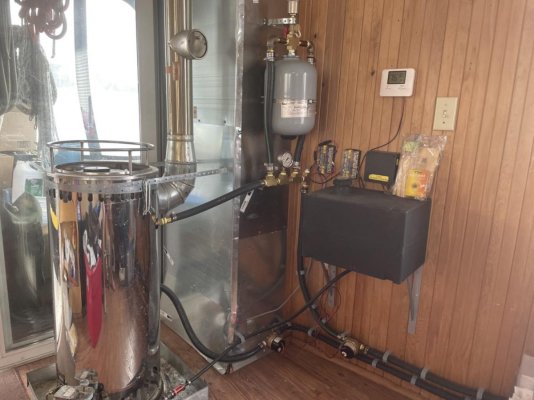I went to the unusual route. Having a 54’ steel boat, requires lot of heating in the winter. I did not want to listen to a roaring heater/pump, so I picked the old school. The goal was to heat the salon and below deck, where the main and guest cabins are located. I wanted a silent system. I wanted a furnace, which needs no electricity. So, I bought a large Refleks heater.
It is a gravity feed diesel, uses very little oil. It can run 24/7, as long the feed tank has diesel in it. My feed tank is 6g and it can feed the furnace for 3-4 days none stop. It also has a cook top plate.
I chose the version with a heating coil inside. This coil is connected to hoses, going out and back in. The circulation of the heated water is managed by 2 solar water circ. pump, which is totally quiet and uses very little power. The hoses travel down to the ER, where they connect to 3 iron radiators (they make them pretty now). A large radiator heats the main, and two others heat the guest cabin and the shower. There are shutoff valves at each leg for maintenance.
The furnace heats up very fast. The radiators follow slower. If I let it run continuously, it keeps the boat nice and dry and comfortable. I do not like to sleep in warm room, so I run the pumps at low rpm. They are totally silent.
The system is very low maintenance and designed for long boats in Europe and northern fishing boats.
The furnace is available from one vendor in the US, to my knowledge. Since I wanted a particular model, with coil and cooktop, I bought it from a German reseller. These furnaces made in Denmark. Shipping is not cheap, but I paid close to $2800 for the large model, including shipping. So, it was not bad.
The radiators are slim design, white color, and quite simple to plumb. The hoses are regular heating hoses for marine use.
At the local shop, where all the mentioned furnaces are sold, I was quoted $7-8000 for a system. As of now, this setup cost me around $4-5000, and it is custom made for my needs. This includes all the valves, expansion tank, thermostat control, gauge, furnace, pumps, hoses, fittings.




